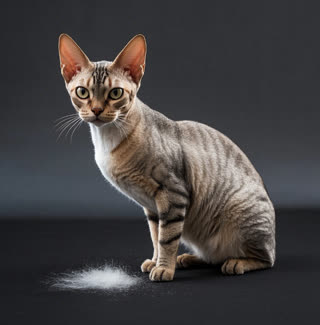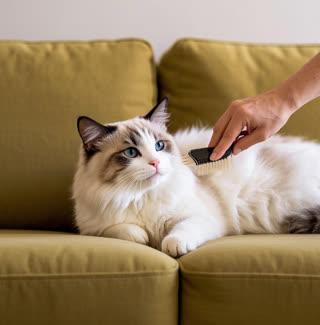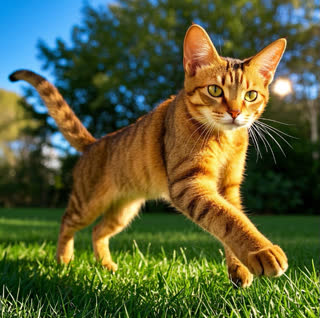The Science of Cat Whiskers: More Than Just Facial Hair
✅ Detect air currents to navigate in the dark
✅ Measure gaps to determine if a space is squeezable
✅ Sense prey movements up to 30 feet away
How Whiskers Work: The Ultimate Sensor System
1. Airflow Detection
Whiskers act like radar, detecting subtle air movements
Critical for nocturnal hunting and obstacle avoidance
2. Texture Analysis
Rubbing whiskers against objects provides tactile feedback
Helps cats identify prey, surfaces, and even human emotions
3. Spatial Awareness
Whiskers measure 1.5x the cat’s body width
Prevent stuck situations in tight spaces
The Hidden Functions of Cat Whiskers
Communication Tool
Forward-pointing whiskers = Curiosity/Playfulness
Flattened whiskers = Fear/Defensiveness
Mood Indicator
Rapid twitching = Excitement/Stress
Relaxed position = Contentment
Health Monitor
Brittle or broken whiskers may signal malnutrition
Whisker loss could indicate allergies or infections
Case Study: How Whiskers Saved a Blind Cat’s Life
Challenge: Luna, a blind cat, needed to navigate her home safely
Solution: Her intact whiskers allowed her to "see" through air currents
Result: Luna became a therapy cat, demonstrating how whiskers compensate for disabilities
Common Myths About Cat Whiskers
Myth: "Whiskers grow back if cut."
Reality: Cutting whiskers causes disorientation and stress.
Myth: "Only cats have whiskers."
Reality: Many mammals, including dogs and mice, have whiskers.
Myth: "Whiskers are just for show."
Reality: They’re critical for survival and quality of life.
How to Care for Your Cat’s Whiskers
Gentle Handling: Avoid touching or pulling whiskers
Environmental Enrichment: Provide scratching posts to maintain whisker health
Dietary Support: Feed foods rich in biotin (e.g., eggs, salmon) for strong whiskers
The Future of Whisker Technology
Robotics: Whisker-inspired sensors improve obstacle detection in drones
Medicine: Tactile feedback devices for visually impaired individuals
FAQs on Cat Whiskers
A: It’s a form of scent marking and affection.
A: Some anecdotes suggest cats act strangely before quakes, but scientific evidence is limited.
A: Most have 24 whiskers (12 on each side), but some breeds may have more.
Cat whiskers are nature’s ultimate sensor system, combining precision and adaptability in ways humans are only beginning to understand. By respecting their vital role and providing proper care, you’ll help your cat thrive. Remember—every twitch of those whiskers is a reminder of the incredible feline biology at work.










